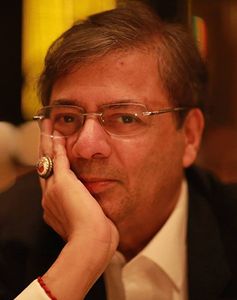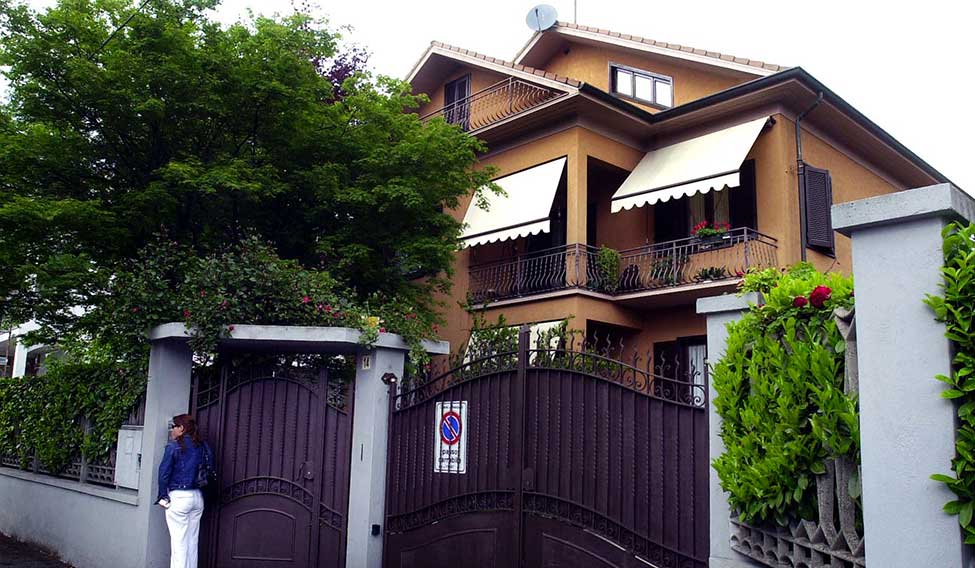 Pranay Gupte
Pranay Gupte
Back in 1998, Vaiju Naravane, a veteran Indian journalist, travelled to the town of Orbassano near Turin in Italy. By this time, Sonia Gandhi—whose maiden name was Antonia Maino and who had spent her adolescence in Orbassano—was well established in Indian politics, and Naravane wanted to delve into her childhood and youth.
This was 33 years after Sonia had met Rajiv Gandhi in Cambridge, where he was studying engineering and she was learning English and working at the varsity cafe. So smitten was Rajiv by Sonia that he hastily scribbled a poem on a paper napkin, summoned the cafe’s Greek owner, gave him a lavish tip, and asked him to hand over that napkin to her.
The year was 1965, and that’s how the Sonia-Rajiv romance began. Naravane’s journey to Orbassano took place 30 years after Sonia and Rajiv were married in New Delhi in 1968, and seven years after Rajiv—like his mother, Indira Gandhi, in October 1984—was assassinated in May 1991.
Mayor Graziano Dell’Acqua of Orbassano told Naravane: “I wonder if we in Italy would accept a foreigner, and a woman at that, to take over a party which has symbolised the country’s struggle against foreign rule and which continues to enjoy [great, if diminished] support across the land. That a certain section of Indians have trusted her with their destiny speaks volumes for the tolerance of India.”
Whatever one’s politics, whatever one’s assessment of Sonia’s checkered political record, and whatever one’s opinion about the wisdom of the Indian National Congress in entrusting its presidency to a foreign-born woman, what Mayor Dell’Acqua said about tolerance pretty much sums up the “Indianness” of Sonia.
In reflecting on her “Indianness,” it is impossible not to say that it underscores India’s special qualities: tolerance and understanding, and acceptance of the alien. That Sonia has managed to stand on her own all these many years after her husband’s death bears testimony to a historical environment that has been welcoming to all—enthusiast and invader alike.
To put it another way, what it takes to be regarded as an Indian is for you to come to India. Better still that you come and live here.
Would Sonia’s “Indianness” have been possible had Rajiv not spotted her at that cafe in Cambridge and immediately fallen for her? Would her “Indianness” even be an issue for many Indians had Prime Minister P.V. Narasimha Rao’s Congress administration not collapsed? Would it have been an issue had there not been a sense that Sonia privately wanted to become prime minister? One has to accept the vagaries of history.
Even though Sonia’s party no longer leads the national government, she remains India’s most influential woman politician. Survey after survey has shown her to be among the world’s best known women in public life. There were five foreign-born heads of the Congress—George Yule, Sir William Wedderburn, Alfred Webb, Sir Henry Cotton and Dr Annie Besant—since its founding in 1885 by Allan Octavian Hume, but Sonia has been the only such person since India’s independence.
“Sonia had no particular ideology—her main focus was to keep the prime minister’s seat warm for her son, Rahul, to perpetuate the dynasty,” Niranjan Desai, a retired high-level diplomat, told me when I asked him why Sonia declined the prime minister’s post in 2004 and instead selected Manmohan Singh.
There is general agreement that it was Sonia’s mother-in-law, Indira Gandhi, who turned the Indian political system into a family concern on the unstated grounds that only the Nehrus and Gandhis, with their historical involvement in the freedom struggle against the British, could be entrusted with stewardship of such a huge nation.
Desai contends that Indira’s moves “fostered a Mughal-style durbari culture which facilitated the rise of Sonia,” however, adding that the durbar has its limitations in a country of India’s size.
The irony of Sonia—who speaks Hindi as fluently as she does English and Italian—is that while her “Indianness” is no longer a national issue, the prospects of her becoming prime minister of India, or those of Rahul and daughter, Priyanka, appear bleak. Prime Minister Modi seems well-entrenched, and is working vigorously and cannily to widen the reach of the BJP.
The 66-year-old Modi already has the 2019 national election in his sights; he has been making overtures to some of Sonia’s close associates for them to cross the aisle in the Lok Sabha, where the BJP enjoys an absolute majority.
Meanwhile, it can be said that, notwithstanding her political ups and downs, Sonia’s biggest accomplishment in public life has been to reinforce her “Indianness” through her commitment to secularism and her long-standing dedication to the dispossessed.
She has been able to push away the perception that a foreign-born person is incapable of leading the Indian polity. That could well be her most striking legacy. Indians may have soured on Sonia’s politics, but they have shown their willingness to accept her “Indianness.”
Another Italian, anyone?
Pranay Gupte is a veteran journalist, author and columnist.





